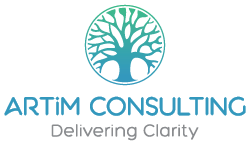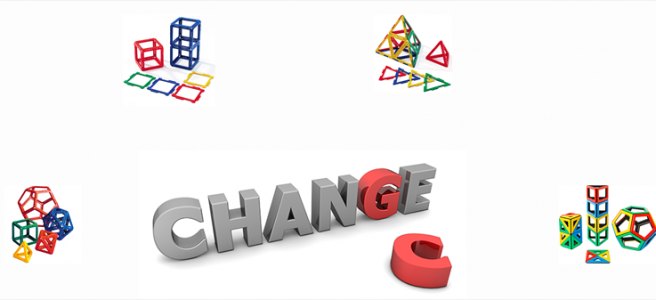In the last post we explored two ways we can reduce the risk of missing critical aspects of the situation we want improve: using frameworks for thinking and being in the learning mode. In this post let’s look a little more closely at frameworks, specifically why we need them.
Related posts
- A framework for what motivates us to act
- A framework for how we look at world: here, here, here and here
- A framework for strategic alignment
- A framework for learning in organisations: here and here
Let’s start with our motivation for action. Since we are trying to address an organisational issue or bring about a change for the better, it is clear our most important purpose is instrumental, i.e. achieving a practical, beneficial outcome. But to achieve our instrumental outcome, we must first be familiar with the situation, i.e. we must have a workable description of it, and we must have an explanation for the problem. A number of organisational change frameworks therefore follow a sequence that goes something like this: describe the problem, figure out the cause, decide what to do and act. Unfortunately, this framework is built on the classical scientific notion of separation between the observer and the observed. In the vast majority of situations involving human systems (and many non-human systems – since Heisenberg!), this distinction disappears. In such systems one can’t actually work out an explanation for the problem based on a description of the situation. The only way to explain how a system works is to do something to it and watch what happens. And that, of course, is the basis for the Plan-Do-Check-Act (PDCA) framework or cycle.
What’s missing in many descriptions of the PDCA cycle is the need for a secondframework for thinking without which PDCA won’t work, or least is unlikely to work well. To be able to check what happens when we do something, we need an expectation of an outcome. If the result of what we do matches our expectation, then we know we are on the right track. To have an expectation of an outcome we need a theory of cause and effect. And that’s the how PDCA is supposed to work.
A quick diversion before we proceed. You may be thinking that theory is for theorists, not for practitioners. You are certainly not alone, but that view is not quite correct. Whatever we do (truly random behaviour isn’t as easy as it sounds) we are acting based on theory. We may not talk about it or even be aware of it, but we are still applying theory when we choose to act. The only question is whether it is good or bad theory.
But how do we know how good our theory is? One definition of good theory is that the better the theory, the more likely it is that the outcome matches our prediction, but we can’t possibly know that till we’ve tried it out. Can we turn this logic on its head, i.e. can we build our theory by observing the outcomes of our actions? That’s certainly possible. We do know quite a bit about both these approaches to addressing an organisational problem.
One approach is to figure out a theory of cause and effect, take some action based on our theory and watch what happens. If the outcome is matches our prediction, then the theory is likely to be valid. This approach is based on the deductive mode of inference. We use it to predict an outcome based on our theory. This is the mode of inference used to test the existence of particles using the Hadron Collider, so it comes with some serious credentials. But, as you may remember, organisations are complex, adaptive, human systems. It is very hard to build a theory that can predict the outcome of an action in such an environment, because the very definition of a complex system is that outcomes of actions are emergent and not deterministic.
What then of the other approach, i.e. act, watch what happens and then figure out a theory of cause and effect? What we are doing here is applying the inductive mode of inference. Because we have seen the sunrise in the east all our lives, we can be reasonably sure it will rise in the east tomorrow. Similarly, we have observed objects falling to the ground and, thanks to Newton, even worked out how fast they will fall. The difference between the two examples is that, given what we know today, our prediction that the sun will rise in the east is based not just on our observations of the past, but on our knowledge of the solar system. But we still don’t have an explanation for gravity. Our prediction about the behaviour of the sun is based on an explanation, but our prediction about gravity is based on a correlation, a description, i.e. we know how it works, but not why. This is the kind of thinking applied when we observe something working in another organisation and conclude that it will work as well in our organisation; the logic for changes based on ‘best practice’.
The deductive mode of inference uses existing theory of cause and effect to make a prediction. It doesn’t require the development of new theory. The inductive mode of inference helps us make predictions based on correlations. It doesn’t result in new theory; the predictions assure at best a very high level of probability, not absolute certitude.
So how does one go about building new theory? It turns out that this is a creative process and we don’t really have an established framework for it in the form of a series of steps that we can follow to develop new theory. That’s where frameworks come in. It helps to think of frameworks as theory-in-the-making. Frameworks help us structure our thinking so it becomes easier for us to develop theory or improve the one we happen to be using.
In the next few posts we’ll look at some frameworks for alignment and try to evaluate them.
If you are interested in learning more about organisational alignment, how misalignment can arise and what you can do about it join the community. Along the way, I’ll share some tools and frameworks that might help you improve alignment in your organisation.

